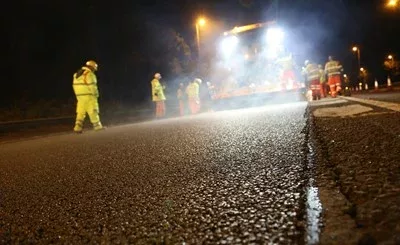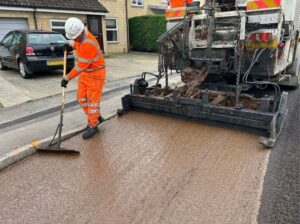As Highway Care announces a major expansion of its operations team, Head of Operations, Mark Greenfield discusses the importance of ensuring barrier is correctly installed, on time and in the right location to enable maintenance projects to go ahead safely on schedule.
Do you remember reading the Elves and the Shoemaker as a kid? Every night the shoemaker would go to bed, and the elves would have been busy all night long to have a new pair of shoes ready for him to sell the next morning.
Highway Care doesn’t make shoes, but our ops team is busy all night long so that our customers can do their job on the road the following morning. We make sure mission critical safety equipment is properly installed to specification on site, wherever it needs to be, ready for when the roads and the site become busy again the following morning.
It’s a responsibility that takes a considerable amount of planning and resource. And one we couldn’t deliver without our own dedicated and driven ops team. Since I joined the team six months ago, demand has become greater than ever, which is why we are now recruiting to build a gang in our Upton depot, further investing in our deployment capabilities.
Those operational capabilities are thanks in no small part to the market-leading barrier we offer. BG800 is a portable steel barrier designed to enhance safety for both highways operatives and road users. Installed in either 6m or 12m lengths, it has been rigorously tested and provides a lightweight, rapid deployment barrier solution that protects road workers and reduces the potential damage to both the vehicle and the barrier in the event of an impact, protecting people from injury.
The safety solution is proven, but its effectiveness relies on quality assured installation in the correct location. That’s why Highway Care offers a turnkey package that includes specification, supply, logistics, and installation anywhere in the UK.
Agile service
There’s no such thing as a typical deployment. But there are factors that we know will come into play for every project, and we understand that we need to be flexible enough to work with our customers with an agile approach, responding to both safety and operational challenges with expertise and in real time.
Based out of four locations, with our hub just off the A1(M) in Grantham, we have a substantial stock of barrier and a fleet of vehicles that enables us to plan and implement BG800 deployments across the country. Every project is meticulously planned to ensure the required barrier and equipment is loaded and dispatched to co-ordinate with our client’s road closure schedule. Every vehicle is double-checked before it leaves the yard, making sure we have everything needed to get the job done efficiently, safely, and on time.
Most projects are secured and planned well in advance, but where there is a need to respond quickly to an urgent requirement for barrier – to ensure safety for emergency repairs for example – we are large enough to have the resources required, and small enough to take a personal interest in supporting our customers’ needs.
Co-ordinated job
One thing that all Highway Care barrier deployment projects have in common is that they have to be delivered within a specific time window. Our teams can only install barrier while the road is closed. And it has to be re-opened on time to allow the road maintenance activity to progress and enable road users to get from A to B.
Every shift begins with a safety briefing and checks that all risk assessment and method statement documentation is in place. The project is planned for the available possession window, with contingency built in for weather or client-side operational delays. But where the schedule slips due to factors beyond our control, wherever feasible, our operatives work overtime to get the project over the line.
As a safety specialist, Highway Care is as focused on the safety of our own operatives as we are on completing a barrier installation that protects road workers and road users. So, while we work during the night and in most weathers, if conditions become treacherous, due to slippery surfaces or strong winds, for example, we will always put the welfare of our personnel first.
Maximising efficiency
Following all safety checks, our operatives work in two teams to install the BG800 barrier. First the installation team marks out the installation site and sets the Hiab in the correct position to offload the barrier onto the road.
Once each section of barrier is positioned in the correct location, the anchoring team follows behind, drilling the road surface and anchoring the barrier to the specified deflection performance, as stipulated by our client. A site supervisor on every project is responsible for carrying our QA checks as the project progresses to ensure that the barrier is consistently installed aligned to the specification.
Attention to detail
Installing barrier is a repetitive process, but, at Highway Care, we never treat projects as routine. Every deployment needs to be planned individually to maximise safety and efficiency. Part of my role is to ensure those principles remain a culture across our team. Working nights, outdoors, come rain or shine is a challenging operational environment, but our teams know that getting it right matters, and that’s what drives us to deliver.






















